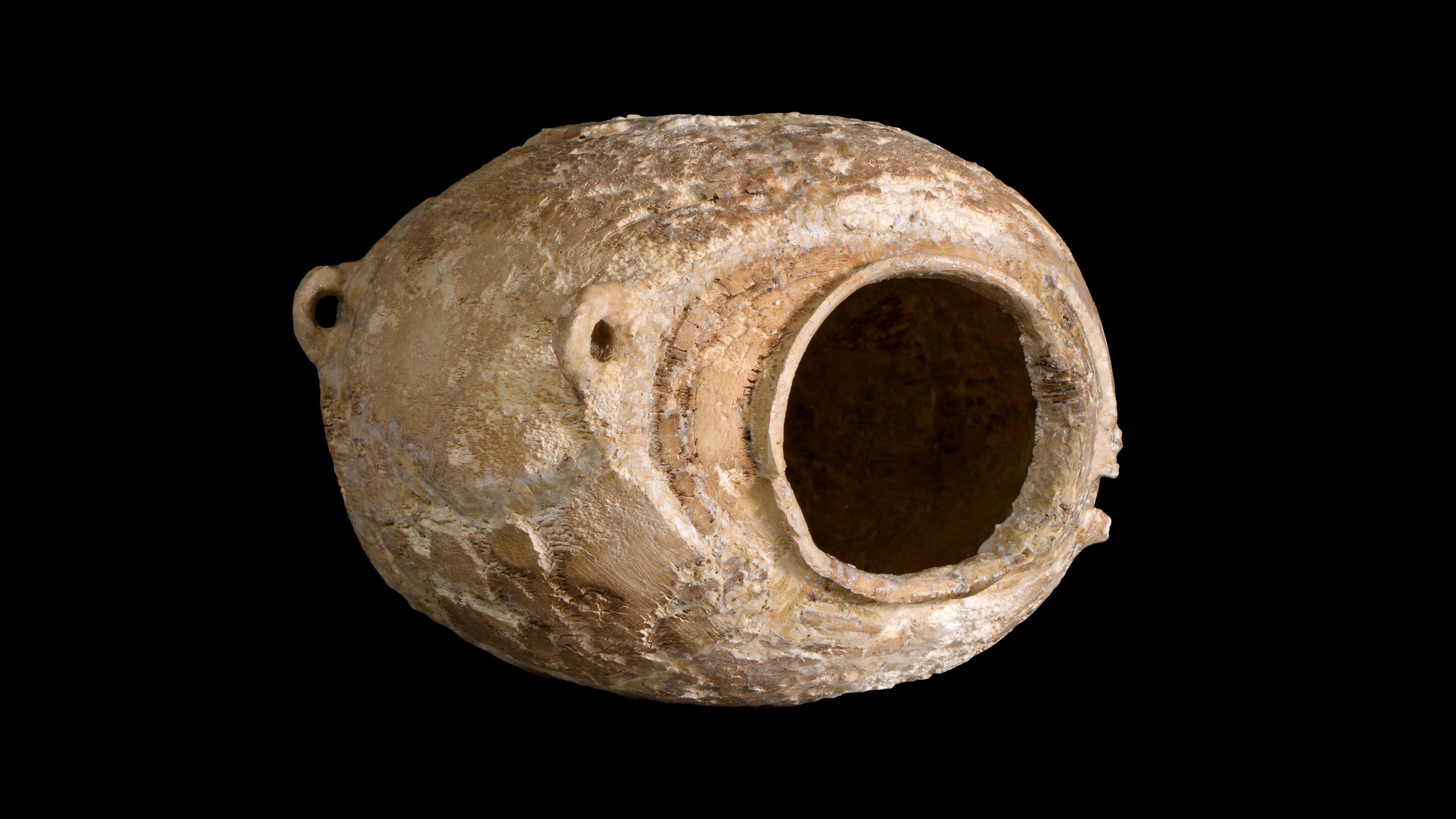Ancient Ivory Jar Unearthed in Israel Reveals Egyptian Ties
A 2020 archaeological excavation of a Chalcolithic site near Beersheba in Israel’s Negev Desert uncovered a 6,000-year-old elephant ivory jar, suggesting ancient cultural ties between the Beersheba Valley and Egypt, the Israel Antiquities Authority (IAA) announced on Tuesday. The artifact was found during an excavation at Horvat Raqiq, led by Avishai Levi-Hevroni and Martin Pasternak of the IAA. The jar, an amphoriskos, lay buried within three large basalt bowls, indicating a possible ritual burial.
The Chalcolithic period, spanning from approximately 4500 to 3500 BCE, marks a significant era of cultural and technological advancement between the Neolithic and Bronze Ages. Characterized by the first use of copper (chalcos in Greek) alongside stone (lithos) tools, this period witnessed the emergence of more complex societal structures and technological innovations. Israeli archaeological findings from this period, including elaborate pottery, intricate metalwork, and sophisticated burial practices, suggest a society that was both agriculturally and socially developed, with evidence of trade networks extending as far as Egypt and Mesopotamia. Notably, this era is also distinguished by its remarkable artistic achievements, including the creation of the Ghassulian culture’s painted terracotta figurines and the construction of ritual sites that indicate early forms of religious or ceremonial practices. The Chalcolithic period provides a fascinating glimpse into the dawn of metal use and the rise of early urbanization in the region.
The significance of this find is manifold, not least because it points to the import of elephant ivory into an area where elephants had not roamed for nearly half a million years. This single find underscores the depth of cultural exchanges between the Beersheba Valley and ancient Egypt. The unique shape of the vessel, its globular form, and the distinct pairs of handles, as described by Olga Negnevitsky, who led the conservation and restoration process, highlight its rarity and the skill involved in its creation.
Dr. Ianir Milevski, collaborating with the National Research Council of Argentina, notes the absence of similar artifacts in both the southern Levant and Egypt, raising questions about the jar’s origins and the nature of its burial. The amphoriskos, made of elephant ivory and intentionally buried broken, was dated back to the Chalcolithic period through its context and the typology of the basalt bowls it was found with.
The discovery challenges current understandings of the region’s prehistory, hinting at a complex web of trade, cultural exchange, and possibly even migration between ancient civilizations. This finding will be presented at the annual Israel Prehistoric Society conference, offering a glimpse into the intricate cultural landscapes of the ancient Near East.


